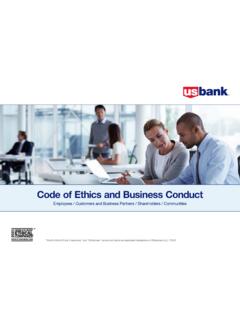Transcription of Bermuda Labour and Employment Law Handbook
1 Bermuda Labour AND Employment LAW I. Hiring A. At-Will v Just Cause Until the Employment Act 2000 ( EA 2000 ) came into force in March 2001, the employer was entitled to terminate an employee s Employment on whatever basis the employer deemed appropriate, provided that sufficient notice of termination was given and human rights legislation was not violated. The employer s right to terminate was constricted only by the terms of the contract. Of course if the employer terminated the employee summarily for cause, the employer had to justify the summary termination by showing proper cause. The effect of section 18 of the EA 2000 is that, in addition to giving proper notice, the employer must have a qualifying reason before it terminates the contract (see paragraph 2 below). 1. Common Law Claims Contractual terms agreed to between the parties may, of course, restrict the circumstances under which an employer may terminate an Employment contract. Written terms may be contained either directly in the contract or they may exist separately ( , in the letter of engagement, a staff memo, the employee Handbook , on the Intranet or in a collective agreement).
2 They may be construed to be incorporated into the contract by express reference or implication. To form an effective part of the contract, the employer should ensure that the employee has signed or otherwise initialed to confirm that such terms have been brought to his or her attention. If the employer does not want these terms incorporated in the contract, it should use clear and conspicuous disclaimers that they do not form part of the contract. If the terms of the written contract are ambiguous, they will be construed against the party who drafted the agreement (usually the employer). In addition, express oral promises or statements may vary the employer s right to terminate. Employers should take steps to train their supervisors not to make oral promises or representations that contradict the written contract between the parties. To avoid these problems, the written contract should stipulate that it forms the whole contract, and supersedes and takes precedence over any prior oral representations or statements.
3 A related area of the common law is that of negligent representations made by the employer to the employee regarding the terms, conditions, or other material facts in the course of negotiating the Employment contract. This tort may have particular relevance in Bermuda where many employees were induced to give up careers elsewhere to come to Bermuda , only to find that realistically they cannot afford to complain about the situation in which they find themselves. The principle has not yet been tested in local courts. In rare cases, customary or notorious terms in a given industry or profession may be implied into the contract, but only if they are sufficiently well defined as to be certain and universally applied in the trade or profession in question. Thus, for example, if it is proved to be customary in a certain industry to give at least six months notice to terminate, the employer will be bound to give such notice, notwithstanding that the Statement of Employment (see Section below) contains a term providing for a shorter period of notice.
4 It is important to note that, in all Employment contracts, there is an implied term of mutual trust and confidence that the employer will not conduct itself in such a way as to undermine the fundamental trust and confidence that exists between it and the employee . If the employer breaches this trust, such action will give rise to the right of the employee to terminate the contract by reason of constructive dismissal. The conduct must be sufficiently serious in nature such that it is not reasonable to expect the employee to continue working for the employer. 2. Statutory Claims In addition to common law claims, the employee can now file a statutory complaint if the employer breaches the termination provisions of the EA 2000. The EA 2000 limits the circumstances under which the employer may now terminate the contract. Section 20 prescribes minimum periods of notice that must be given and section 18 provides that, subject to other sections of the Act, there must be a valid reason for termination connected with: The ability, performance, or conduct of the employee ; or The operational requirements of the employer's business.
5 Section 22 of the EA 2000 provides that, if the employee requests it, the employer must provide him or her with a "Certificate for Termination" containing the reason(s) for the termination. In addition, section 28 of the EA 2000 ("Unfair dismissal") protects employees from disciplinary action or termination on the following grounds: An employee 's race, sex, religion, colour, ethnic origin, national extraction, social origin, political opinion, disability, or marital status; An employee 's age, subject to any other enactment or any relevant collective agreement regarding retirement; Any reason connected with an employee 's pregnancy, unless it involves absence from work that exceeds the allocated leave entitlement; An employee 's trade union activity; An employee 's temporary absence from work because of sickness or injury, unless it occurs frequently and exceeds the allocated leave entitlement; An employee 's absence from work for any of the reasons mentioned in section 13 (public duties), or due to service as a volunteer fire officer.
6 An employee who removes himself or herself from a work situation which he or she reasonably believes presents an imminent and serious danger to life or health; An employee 's participation in any industrial action that takes place in conformity with the Labour Relations Act 1975; Filing a complaint or participating in proceedings against an employer involving alleged violations of this Act. B. Discrimination The Human Rights Act 1981 is of general application and wide in scope. It expressly applies to employers, who must not discriminate in any of the ways proscribed by the Act. Any term of a contract of Employment that contravenes the Act is void and of no effect. The Act provides a regime for investigating alleged abuses and complaints, and seeks to achieve a reconciliation and compensation for the injured party. Many of the rights protected in the Human Rights Act have also been protected under the EA 2000, reviewed above. The Act is an independent regime designed to give redress for discriminatory behaviour, and the remedies under the EA 2000 are to redress unfair Employment practices.
7 There may be a degree of overlap in some cases, but the purpose of each statute is distinct and their respective procedures are very different. Discrimination in Employment is not permitted in recruitment, termination, training, transfer, probation, apprenticeship, promotion, or classification or inclusion of special terms in contracts of Employment . Discrimination occurs if less favourable treatment is given to employees because of their race, place of origin, colour, ancestry, sex, marital status, disability, legitimacy, or religious or political belief. Employers should not impose restrictions on Employment to one group within the workforce that do not apply to others with respect to these protected characteristics. Where a complaint is made to the Human Rights Commission, the Commission will investigate the complaint and attempt to resolve the grievance through conciliation and mediation. Where the Commission concludes that it is unlikely to be able to settle the dispute or has been trying for 9 months to settle the dispute but has been unsuccessful, and the complaint is not so serious as to warrant a prosecution, the Commission must refer the matter to the Minister of Labour , who will then decide in his or her discretion whether to refer it to a Board of Inquiry.
8 Board of Inquiry proceedings follow the procedure delineated in the Commissions of Inquiry Act 1935. The Board has wide powers to award compensation and make orders for redress, including awards for injury to feelings. There is an appeal to the Supreme Court from a finding or award of the Board on matters of fact or law. Criminal penalties are imposed upon conviction for unlawful discrimination or for aiding, abetting or wilful infringement of the Act. The Human Rights Commission is charged with additional functions relating to racial inequality in an effort to work towards the elimination of racial discrimination. It must establish and maintain a register of employers from information received from the Department of Statistics and it may issue codes of practice containing practical guidance towards eliminating racial discrimination in the workplace. The code of practice must be approved by both Houses of the Legislature before it becomes enforceable. A failure by a person to observe a code of practice does not of itself render that person liable to proceedings; but in any other proceedings before a board of inquiry or court, the code of practice may be taken into account as relevant evidence.
9 All employers who employ 10 or more employees must register and provide information each year relating to the makeup of their workforce by category of race and remuneration, promotion and training of all employees, and reasons for termination of Employment . A record of these statistics and information is maintained by the Ministry of Development and Opportunity. C. Employment Applications The effect of Bermuda s human rights legislation is that Employment applications should not solicit information concerning race, place of origin, colour, ancestry, sex, marital status, disability, legitimacy, or religious or political belief. Employers, however, are entitled to give preference to Bermudians applying for jobs. D. Use of Employment Contracts All Employment relationships are created by a contractual agreement. In the past, such agreements could be wholly oral; there might not be any written contract at all and the terms of the relationship had to be defined by reference to other documents or just the spoken word between the parties.
10 Presently, section 6 of the EA 2000 mandates that everyone who is employed must be given a document by his or her employer that sets out certain fundamental terms of Employment ( the Statement of Employment ). The terms that must be included are: the names of the employer and employee , the date of the commencement of Employment , details of the position, hours of work, holidays, wages, sickness allowance, notice period, probation period, dress codes, the relevant collective bargaining agreement (if any), and details of disciplinary procedures and pension scheme contributions and rights. Any variation to the terms of Employment that are contained in the Statement must be embodied in an amended Statement that is signed by both parties, thereby indicating their mutual agreement, and given to the employee within one month from the change having been made. When drafting Employment contracts, Bermuda employers should be aware that non-compete clauses are generally unenforceable in Bermuda unless they are considered reasonable in protecting the employer s legitimate business interests, such as trade secrets or other confidential information.










